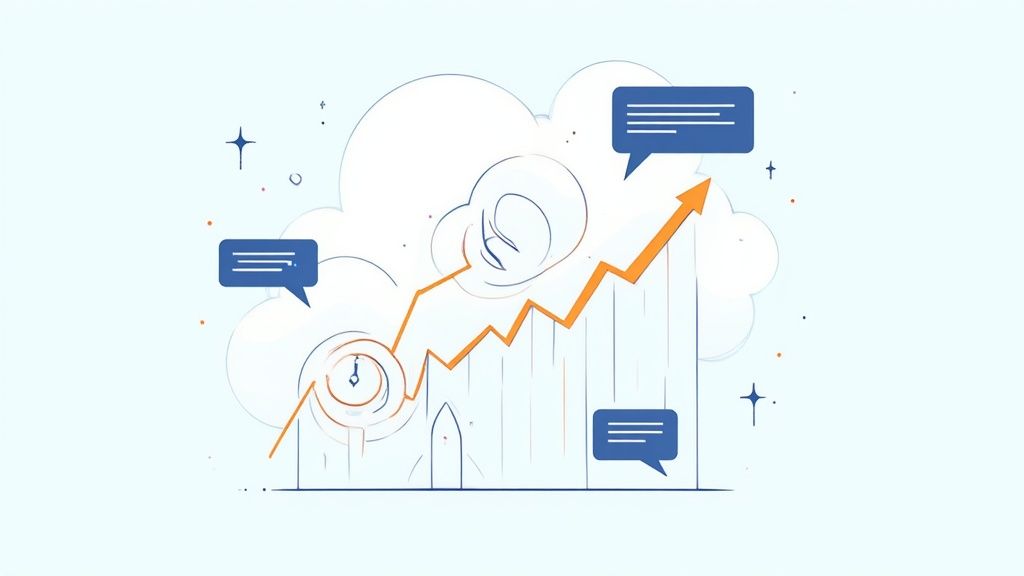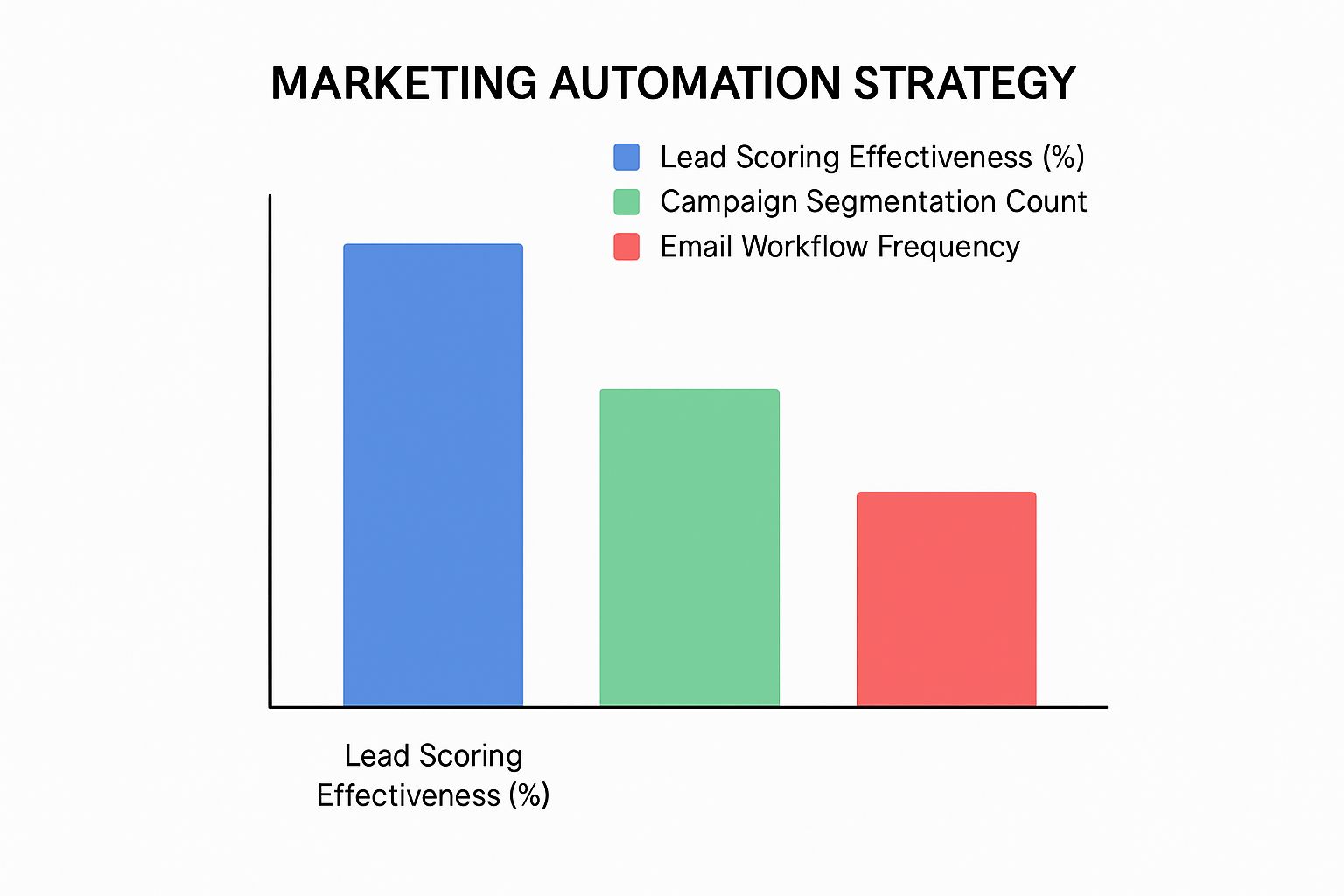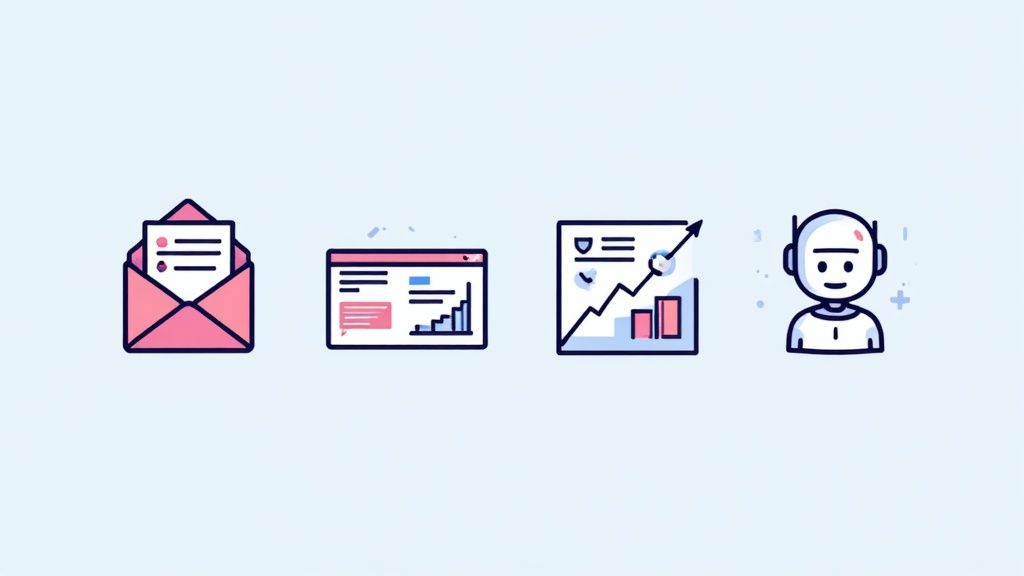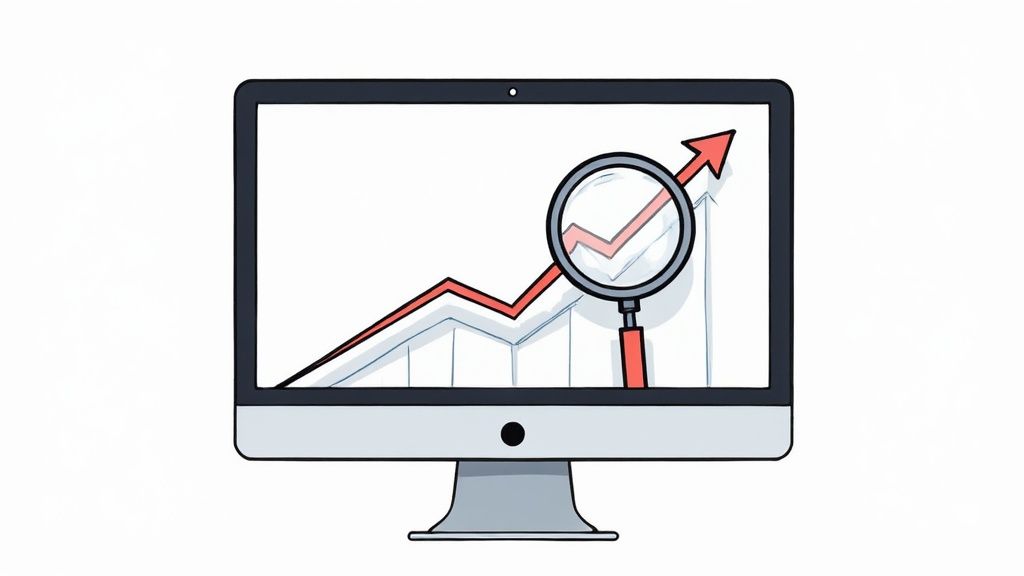The Evolution Of Marketing Automation: Strategy Over Tools
As marketing automation has matured, the conversation has moved from assessing isolated features to defining the broader strategy that shapes customer experiences and drives business outcomes. Instead of treating automation as a standalone technology deployment, leading companies integrate it into their core marketing roadmap. This approach knits together customer touchpoints, data insights, and business goals into a cohesive plan.
This shift demands a change in mindset: it’s no longer enough to stack on more applications. Teams must design each interaction with intent, ensuring clarity at every step of the journey.
From Email Sequences To Customer Journey Orchestration
In the early days, automation centered on basic email drip campaigns—akin to programming a coffee maker to start at a set time. Modern orchestration resembles a barista who anticipates preferences, adjusting content based on real-time engagement signals.
This evolution has unveiled capabilities such as:
- Adaptive workflows that react immediately to user behavior changes
- Cross-channel coordination uniting email, social media, SMS, and ads
- Personalized experiences tailored to each individual’s pain points and purchase history
By moving beyond single-channel outreach, brands make every step feel intentional, paving the way for deeper engagement.
Myths That Keep Marketers Focused On Shiny Tools
Despite significant progress, several enduring myths distract teams from outcome-driven planning:
- Believing that adding more tools will automatically fill engagement gaps
- Assuming generic templates can deliver true one-to-one personalization
- Expecting that platform dashboards alone can replace deliberate strategic planning
When these misconceptions prevail, automation efforts become fragmented, highlighting the need for a clear, unifying framework.
Comparing Early Automation Versus Strategic Automation
| Aspect | Early Automation | Strategic Automation |
|---|---|---|
| Primary Focus | Tool setup and technical integration | Customer journey alignment and outcomes |
| Scope | Single channel (mostly email) | Multi-channel orchestration |
| Measurement | Vanity metrics (opens, clicks) | Business impact (pipeline velocity, ARR) |
Embedding Success Through Data-Backed Strategy
A data-backed strategy delivers measurable benefits. For example, 72% of companies report positive results from marketing automation, and 87% of marketing teams are already using or planning to adopt these platforms. Together, these figures reinforce automation’s role in enhancing process efficiency and boosting customer engagement. Read the full research here.
Building A Strategy-First Framework
To keep automation feeling human, follow these steps:
- Define clear business objectives tied to specific customer actions
- Map complete journey flows rather than isolated touchpoints
- Establish governance for continuous testing, measurement, and refinement
This strategy-first framework ensures that each technology choice directly supports your overarching vision, creating a seamless path from prospect to customer.
By embracing a strategy-driven mindset instead of fixating on tools alone, organizations guide prospects thoughtfully through every stage—setting the stage for effective tool selection in the next phase.
Is Your Business Ready for Marketing Automation?

Before you adopt a new platform, confirm that the foundation for a marketing automation strategy is in place. Rushing into tools without addressing prerequisites often halts progress—one e-commerce brand saw its first campaigns fail from missing content and disorganized data. After pausing to fix those issues, they achieved a 40% increase in qualified leads on their next launch. That turnaround underlines the value of a structured readiness check.
Your content assets must be organized before any automation goes live. Think of it as building a house—without blueprints, workflows collapse. A B2B software firm discovered that 75% of its automated emails featured outdated offers because no one audited the asset library. They responded by creating a living content map that keeps every message aligned with the customer journey. Next, we’ll explore how data quality and journey mapping drive stronger results.
Marketing Automation Readiness Assessment
A framework to evaluate your organization’s preparedness for implementing a marketing automation strategy
| Readiness Factor | Beginner Level | Intermediate Level | Advanced Level |
|---|---|---|---|
| Content Assets | Limited email templates; no content calendar | Basic library of emails, blog posts; quarterly audits | Comprehensive library; dynamic content with version control |
| Data Quality | Fragmented contacts; high bounce rates | Cleaned CRM records; basic segmentation | Enriched, deduplicated database; predictive scoring |
| Journey Mapping | Ad hoc touchpoints; reactive campaigns | Mapped primary paths; manual handoffs | Full end-to-end mapping; cross-channel orchestration |
| Team Skills | Single owner; minimal training | Small team with basic certifications | Dedicated specialists; ongoing skill development |
| Technology Integration | Standalone email tool | API connections to CRM; manual exports | Bi-directional integrations across CRM, CMS, analytics |
Reviewing this table, data quality stands out as a common roadblock—about 60% of automation initiatives stall due to incomplete or inconsistent records. Teams at the advanced level typically report 25% higher ROI by maintaining clean, enriched data. With reliable data in place, journey mapping shifts from guesswork to strategic planning, ensuring each automated sequence feels deliberate and effective.
Tips For Strengthening Your Foundations
- Audit your content repository every quarter to retire stale assets and refresh key offers
- Clean and enrich your customer database with progressive profiling and third-party data
- Map three distinct buyer journeys—from prospect to repeat customer—to uncover friction points
- Invest in team training: hold regular workshops on workflow design and analytics
- Pilot your first workflow on a small segment, gather feedback, then scale in phases
A successful marketing automation setup begins well before you click “activate.” By assessing content readiness, data quality, journey mapping, and team capabilities, you can uncover high-impact opportunities and avoid the pitfalls of rushed implementations. Use this framework to identify gaps and choose tools that align with your business goals.
Selecting Automation Tools That Align With Your Goals
Choosing the right platform is as crucial as defining your marketing automation strategy. With many vendors offering similar features, it’s easy to be swayed by flashy presentations. Seasoned marketing leaders suggest zeroing in on business outcomes rather than feature checklists.
Between 2021 and 2024, the worldwide marketing automation industry revenue was forecast to grow by 38.2%, reaching approximately $6.62 billion by the end of 2024. This growth curve shows why even small teams feel pressure to adopt automation—and why aligning tools with specific objectives can prevent wasted spend. Find more detailed statistics here. These figures set the stage for a fact-based trial process that tests each platform against your unique needs.
Key Evaluation Criteria
When assessing solutions, focus on questions that align with your long-term goals:
- Business Goals Fit: Can the platform handle your lead volume, channel mix and reporting needs?
- Integration Ease: Does it connect seamlessly with your CRM, CMS and analytics stack?
- Scalability: Will pricing and performance remain stable if your database doubles?
- User Experience: Are workflows intuitive for both new and technical users?
- Vendor Support: What service levels, training and community resources come included?
- Trial Design: Can you run a 30-day pilot that mirrors a live campaign end to end?
A focused trial will reveal genuine strengths and limitations rather than polished demo slides.
Marketing Automation Platform Comparison
Below is a comparison of leading marketing automation platforms to help you weigh features, pricing and integration options.
Marketing Automation Platform Comparison
Comparison of key features, pricing, and best use cases for popular marketing automation platforms
| Platform | Best For | Key Features | Pricing Model | Integration Capabilities |
|---|---|---|---|---|
| HubSpot | All-in-one growth teams | Drag-and-drop workflows, CRM, social tools | Tiered subscription | Native CRM, CMS, sales integrations |
| Marketo Engage | Large enterprises | Advanced lead scoring, account-based marketing | User-based license | Extensive APIs, Adobe suite |
| ActiveCampaign | SMBs and budgets | Built-in CRM, SMS, site tracking | Contact-based pricing | Zapier, Shopify, WordPress |
| Pardot (Salesforce) | B2B sales alignment | Einstein AI scoring, multi-touch attribution | Contractual licenses | Native Salesforce, Tableau |
From this comparison, teams often discover trade-offs:
- Specialized tools may deliver deep analytics but lack broad channel support
- Comprehensive suites simplify vendor management but can inflate costs for unused modules
Understanding these patterns ensures you select essential capabilities without overspending.
Data Chart Visualization
The following bar chart data chart visualizes each platform’s average pricing against its feature coverage score.

This data chart shows that all-in-one suites often command higher prices for deeper integration, while specialized tools offer cost-effective core features.
Negotiating Terms And Avoiding Over-Purchasing
Before signing a contract, use these best practices to protect your budget:
- Define clear usage caps and overage rates for contacts, emails and API calls
- Secure trial extensions or proof-of-concept clauses tied to performance metrics
- Include rollback provisions if integrations fail or uptime dips below agreed SLAs
- Negotiate implementation support hours and training discounts upfront
- Limit add-on purchases until post-pilot reviews confirm genuine need
By shaping contract terms early, you avoid paying for capabilities you won’t enable.
With a well-evaluated platform in hand, the next step is designing automation workflows that feel genuinely human—ensuring your tool choice delivers both efficiency and engagement.
Designing Automation Workflows That Feel Genuinely Human

After choosing a solid platform, your marketing automation strategy comes to life when workflows sound more like conversations than broadcasts. Each campaign should act as a thoughtful companion—listening, adapting, and replying to individual needs. Moving away from one-size-fits-all sequences, you can design dynamic journeys that shift content based on real-time behavior.
Psychology Behind Trigger Selection
Choosing the right trigger is like finding the perfect moment to chime in during a chat. When you send follow-ups after specific actions—page views, link clicks, or form submissions—you tap into each individual’s intent. Research shows that tailoring campaigns to these events can increase engagement by 30–50%, so focus on signals that matter, such as downloading a case study or viewing pricing.
Optimal Timing Intervals And Progressive Sequencing
Timing is crucial for authenticity. Messages delivered within 24–48 hours of an action tend to have the highest open rates. Aim for intervals that feel natural: prompt enough to stay relevant but spaced out to avoid fatigue.
Use progressive sequencing to build rapport:
- Start with a warm welcome or brief acknowledgment
- Share a useful resource that tackles a key pain point
- Invite them to a detailed case study or product demo
- Ask for feedback or suggest a clear next step
These steps echo a real dialogue and help you sidestep over-automation.
Building Thoughtful Exit Points
Every nurturing path needs a respectful exit. If a contact hasn’t opened three emails in a row, pause the sequence or shift them to a re-engagement track. Exits can also lead to a newsletter subscription or a more personalized sales outreach. This approach honors your audience’s attention and keeps your brand from feeling pushy.
Workflow Framework Across Journey Stages
The table below outlines a straightforward framework for guiding prospects from first touch to advocacy:
| Journey Stage | Trigger Event | Content Strategy | Exit Condition |
|---|---|---|---|
| Prospect | Website signup | Welcome email + top blog post | Click on primary CTA |
| Lead Nurture | Resource download | Email series solving pain points | Demo request |
| Conversion | Demo attendance | Personalized proposal + ROI calculator | Contract signed |
| Loyal Advocate | Successful onboarding + feedback | Referral invitation + training videos | Referral completed |
Mapping these stages ensures each workflow feels deliberate and relevant.
Tips For Maintaining The Human Element
- Personalize subject lines with first names or interests
- Mix formats: text, video snippets, and interactive quizzes
- Infuse your brand voice with a conversational tone and occasional emoji
- Review engagement metrics weekly and tweak triggers accordingly
- Survey small audience segments to gather direct feedback
Crafting workflows this way elevates your marketing automation strategy from mere efficiency to genuine relationship building—delivering messages that resonate like a real conversation.
Building An Integrated Data Foundation That Powers Results
Creating genuinely human automation workflows relies on accurate insights, and that starts with unified information. If your CRM shows conflicting purchase histories, personalized messages break down. Marketing automation depends on connecting every system that holds customer data—from e-commerce carts to help-desk tickets. A single source of truth ensures each touchpoint uses the right data.
Connecting Core Business Systems
Linking your marketing automation platform with other tools removes silos and speeds up processes. Common integrations include:
- CRM Platforms such as Salesforce
- Sync contact updates, deal stages, and activity logs in real time
- Fuel lead scoring models with purchase and engagement data
- E-Commerce Engines like Shopify
- Import browsing behavior to trigger cart-abandonment workflows
- Feed order history into cross-sell and re-engagement campaigns
- Customer Service Systems like Zendesk
- Leverage support ticket status to adjust nurture sequences
- Prevent outreach to customers in active resolution workflows
By building these bridges, companies with unified records see 30% higher email engagement rates and launch campaigns 45% faster than fragmented peers.
Battling Common Data Challenges
Dirty data can undermine even well-designed automation. The following table highlights typical issues and practical fixes:
| Data Issue | Impact on Automation | Proven Remedy |
|---|---|---|
| Duplicate Records | Misfired triggers, inflated metrics | Implement daily de-duplication jobs |
| Inconsistent Formatting | Segmentation errors, campaign bounces | Enforce standardized data schemas |
| Missing Attributes | Shallow personalization | Use progressive profiling forms |
| Outdated Information | Irrelevant messaging | Schedule regular cleansing and enrichment |
Cleaning and reconciling records at the source ensures your automation rules fire on the right data every time.
Progressive Profiling With Privacy In Mind
To enrich profiles without overwhelming prospects, introduce fields gradually. This step-by-step approach respects privacy boundaries and reduces form abandonment.
- Ask for job title and company during initial signup
- Request content preferences (topics, formats) after the first interaction
- Trigger detailed surveys only when lead-score thresholds are met
Pragmatic Data Governance Approaches
Balancing personalization power with compliance requires clear policies and ownership. A solid governance framework protects data quality and supports your automation strategy.
- Assign a data steward to manage quality and permissions
- Define retention rules for each data type and system
- Conduct quarterly audits to identify drift and errors
- Document integration flows and fallback logic
With these foundations in place, every trigger, segment, and message will rely on correct data—laying the groundwork for seamless customer experiences and measurable results.
Measuring What Matters: Beyond Vanity Metrics

As you refine your workflows and data infrastructure, the next priority is to prove that your marketing automation strategy delivers actual revenue rather than just clicks and opens. Metrics like open rates and click-through rates (CTR) provide basic engagement data but don’t show financial return. You need a clear framework that ties each metric to tangible business outcomes.
Metrics That Align With Funnel Stages
To link automation to revenue, select metrics that match each stage of the customer journey:
- Top-Of-Funnel
- Lead volume
- MQL (Marketing Qualified Lead) conversion rate
- Mid-Funnel
- Opportunity creation rate
- Pipeline velocity
- Bottom-Funnel
- Closed-won deals
- Average deal size
These stage-specific measures establish the foundation for meaningful reporting.
Building Dashboards That Communicate Value
Design dashboards to highlight executive concerns such as revenue growth, deal velocity and cost per acquisition. Use visuals like trend lines and heat maps to compare performance against benchmarks. Add brief notes explaining anomalies (for example, seasonality or campaign launches) to maintain clarity.
Common Pitfalls And How To Avoid Them
Watch out for these traps when measuring performance:
- Chasing Vanity Metrics: Prioritizing opens and clicks without considering pipeline progress
- Inconsistent Benchmarks: Resetting targets mid-quarter breaks comparability
- Lack Of Testing Rigor: Skipping A/B tests leads to changes that aren’t validated
Sticking to reliable metrics ensures that attribution insights remain trustworthy.
Attribution Models For Complex Journeys
Different models assign credit in various ways:
| Attribution Model | Pros | Cons |
|---|---|---|
| First-Touch | Simple, highlights initial campaigns | Ignores later, high-intent interactions |
| Linear | Spreads credit equally | Doesn’t weight high-impact touchpoints |
| Algorithmic/Custom | Captures nuanced influence patterns | Requires detailed data and modeling skills |
Choosing the right model lets you demonstrate how automation drives return.
Meanwhile, the global marketing automation sector is projected to grow by 12.6% to more than $8 billion in 2024, with an expected CAGR of 15.3% through 2030. Read the full research here: Discover more insights about marketing automation
To maintain consistency, use practical templates for monthly, quarterly and annual performance reviews that tie back to revenue trends. Also consider how this data supports your overarching integrated marketing strategy.
Main Takeaway: Measure metrics that matter, keep your attribution accurate and uphold testing discipline to showcase genuine business impact.
Future-Proofing Your Marketing Automation Strategy
As you refine campaign measurement, it’s important to plan for the next stage in marketing automation strategy. New tools—ranging from AI-powered insights to chat-based outreach—are changing how we connect with customers. By focusing on proven trends and running targeted tests, you can stay on track and build a strategy that endures.
Emerging Automation Trends To Watch
- AI-Powered Personalization: Delivers real-time content suggestions based on user behavior
- Conversational Marketing: Uses chatbots and messaging apps to simulate human conversation
- Predictive Analytics: Leverages machine learning to forecast lead quality and churn risk
These trends can drive high-impact results, but not every solution belongs in your marketing stack.
Pilot New Technologies Safely
- Define a specific use case and set a clear success metric
- Launch a controlled pilot with a small audience segment
- Gather qualitative feedback and performance data
- Scale only after confirming ROI
Balancing Personalization With Privacy
Evolving privacy regulations require responsible data management. Essential steps include:
- Clear Opt-In: Collect consent before gathering any personal data
- Anonymized Data: Remove identifiers when possible
- Quarterly Reviews: Audit and update customer profiles regularly
Building Team Capabilities For Tomorrow
Prepare your team for continuous change:
- Host monthly innovation workshops
- Encourage cross-functional skill sharing
- Allocate time for vendor sandbox testing
| Emerging Trend | Potential Impact | Pilot Approach |
|---|---|---|
| AI-Powered Personalization | +25% engagement uplift | A/B test dynamic subject lines in an email series |
| Conversational Marketing | +30% faster response times | Deploy a chat widget on a high-traffic landing page |
| Predictive Analytics | +20% forecast accuracy | Compare predicted vs. actual conversions |
Main Takeaway: Test selectively, maintain privacy standards, and invest in your team’s skills to keep your marketing automation strategy future-proof.
Ready to lead rather than follow? Partner with ReachLabs.ai to evolve your marketing automation strategy with expert guidance and tailored execution. Start your journey with ReachLabs.ai





